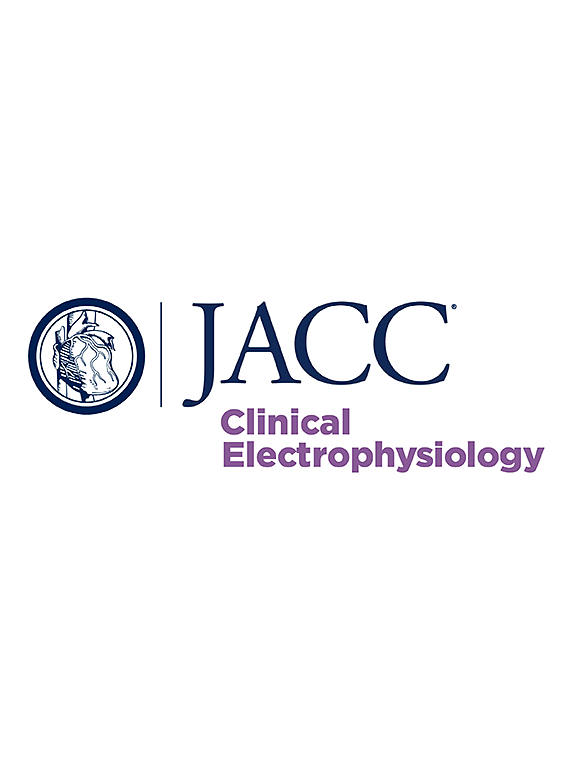NEMESIS-PFA
IF 7.7
1区 医学
Q1 CARDIAC & CARDIOVASCULAR SYSTEMS
引用次数: 0
Abstract
Background
Early evidence showed reduced complications with pulsed field ablation (PFA), but non-target tissue collateral damage created by electroporation effects is poorly understood and may significantly differ between systems.
Objectives
In this study, the authors evaluated the collateral effects of PFA.
Methods
NEMESIS-PFA is a multicenter, observational registry of patients who underwent AF ablation from March 2024 onwards with any approved PFA systems—either a circular multielectrode array, spherical, pentaspline, or variable loop catheter—or radiofrequency ablation (RFA). We assessed procedural characteristics, biomarkers for myocardial injury, hemolytic anemia, and renal function, and left atrial function in select patients.
Results
A total of 871 patients, aged 68.9 ± 10.9 years and male (70.8%), with paroxysmal atrial fibrillation (59.4%), and CHA2DS2VASC of 3.3 ± 1.3 were included. Of these, 87.1% (n = 773) underwent PFA with a pentaspline (70.9%), circular multielectrode (14.1%), spherical (12.4%), and variable loop (2.3%) catheter. Significant postprocedural change in certain biomarkers such as troponin (13,551.0 vs 127.5 ng/dL; P < 0.001), lactate dehydrogenase (107.5 vs 26.5 IU/L; P < 0.001), and haptoglobin (−102.0 vs −33.5 mg/dL; P < 0.001) were detected following the PFA procedures compared with RFA, and the change was dose-dependent. There were also significant differences in biomarkers across PFA systems. Lastly, there was a significant change in left atrial ejection fraction (−20.0% vs. −5.0%, P < 0.001) in PFA vs RFA.
Conclusions
Current PFA technologies are associated with worse troponin leak, hemolysis, and renal dysfunction than RFA. As PFA becomes mainstream, future studies appraising these effects and understanding the short term and long-term implications are needed.
NEMESIS-PFA:研究与脉冲场消融相关的侧支组织损伤。
背景:早期证据显示脉冲场消融(PFA)可减少并发症,但电穿孔效应造成的非靶组织附带损伤尚不清楚,不同系统之间可能存在显著差异。目的:在本研究中,我们评估PFA的副作用。方法:NEMESIS-PFA是一项多中心观察性注册研究,研究对象是自2024年3月起使用任何批准的PFA系统(圆形多电极阵列、球形、pentaspline或可变环路导管)或射频消融(RFA)进行房间隔消融的患者。我们评估了一些患者的程序特征、心肌损伤、溶血性贫血、肾功能和左心房(LA)功能的生物标志物。结果:共纳入871例患者,年龄68.9±10.9岁,男性占70.8%,阵发性心房颤动占59.4%,CHA2DS2VASC为3.3±1.3。其中,87.1% (n=773)的患者接受了PFA,使用了五线(70.9%)、圆形多电极(14.1%)、球形(12.4%)和可变环(2.3%)导管。结论:与RFA相比,目前的PFA技术与更高的肌钙蛋白泄漏、溶血和肾功能障碍相关。随着PFA成为主流,未来的研究需要评估这些影响并了解短期和长期影响。NEMESIS-PFA是一项多中心观察性研究,研究对象是接受脉冲场(PFA)或射频(RFA)消融治疗心房颤动的患者。871例患者接受了PFA(87.7%),包括pentaspline(70.9%)、圆形多电极(14.1%)、球形(12.4%)或可变环(2.3%)导管或RFA(11.2%)。肌钙蛋白的变化(127.5 vs. 13551.0 ng/dL, p
本文章由计算机程序翻译,如有差异,请以英文原文为准。
求助全文
约1分钟内获得全文
求助全文
来源期刊

JACC. Clinical electrophysiology
CARDIAC & CARDIOVASCULAR SYSTEMS-
CiteScore
10.30
自引率
5.70%
发文量
250
期刊介绍:
JACC: Clinical Electrophysiology is one of a family of specialist journals launched by the renowned Journal of the American College of Cardiology (JACC). It encompasses all aspects of the epidemiology, pathogenesis, diagnosis and treatment of cardiac arrhythmias. Submissions of original research and state-of-the-art reviews from cardiology, cardiovascular surgery, neurology, outcomes research, and related fields are encouraged. Experimental and preclinical work that directly relates to diagnostic or therapeutic interventions are also encouraged. In general, case reports will not be considered for publication.
 求助内容:
求助内容: 应助结果提醒方式:
应助结果提醒方式:


